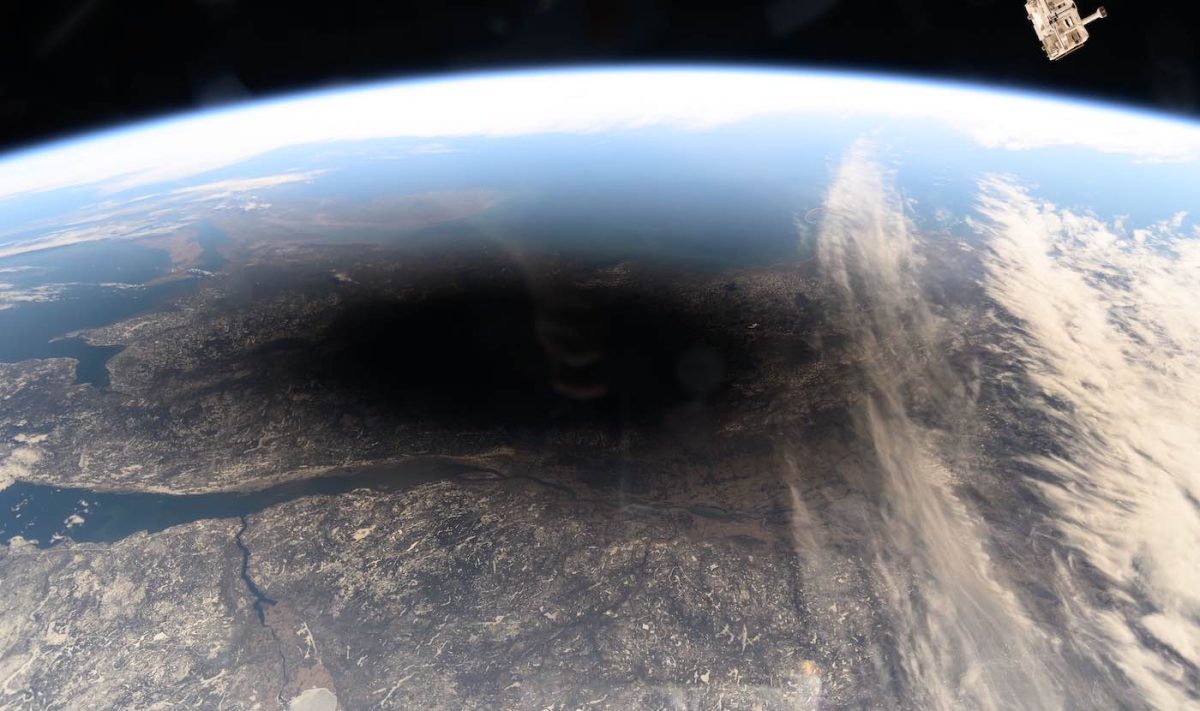Millions of people looked up to the sky on April 8 as a total solar eclipse sailed across North America.
This eclipse hit land in Mexico as it went through Texas, the midwest, into Canada, and eventually leaving from Newfoundland.
Solar eclipses are when the moon passes directly in front of the sun, resulting in a shadow cast on earth, usually between 150 to 300 miles in diameter. This creates a few minutes of practically dusk in the middle of the day for places in the path of totality.
For the eclipse, I traveled to Geneva, Ohio, to witness full totality. Here at Decatur, we were in the partial eclipse, with 80 – 85 % of the sun being obscured by the moon, although not as spectacular, still interesting, and some minimal light changes to witness.
It is very nerve racking leading up to the eclipse. You spend the whole time worrying about the weather, obsessively checking the forecast, with the fate of it in Mother Nature’s hands. Around 2:00 pm. is when the partial eclipse began.
I remember seeing the smallest nibble of the sun through my glasses. It progressed, with more and more of the sun being devoured by the moon. About 20 minutes leading up to totality is when strange things happened to the light.
This dull, unnatural light, unlike anything else, shone as the sun was obscured. The best way I can describe it is that it gets dark, but it is still very light at the same time, as the sun is still at its midday height.
As totality approached, the temperature noticeably dropped, because the land was receiving much less solar radiation.
The last bit of the sun remained; here was totality. The world became instantly dark, very dark. As cheers erupted from the streets around. There was the corona as it settled into totality.
Seeing the sun covered, you can’t even comprehend that it is the moon you’re seeing. It is more like some eldritch hole in the sky. Looking around, I saw the all round dawn, a 360-degree gold band on the horizon. Totality lasted around 3-4 minutes, much longer than the 2017 eclipse, which lasted only 2 minutes. And it was, surprisingly, very dark.
Also during totality, some red dots around the corona were visible. These red dots are solar prominences, which are highly energized plasma eruptions, similar to solar flares but much less intense. These are very fleeting. The ones millions of people saw that day were unique to that time and would only last a few days or weeks, never to be seen again. And I think that’s really special.
If you missed the eclipse, don’t worry; there are many chances to see one soon if you want to travel outside the US. Like the North African total eclipse in 2027 or the Australian total eclipse in 2028. But the next one in the United States will be in 2044, unfortunately.
Seeing a total solar eclipse is something everyone should witness at least once in their life, and there are many more opportunities to do so.













